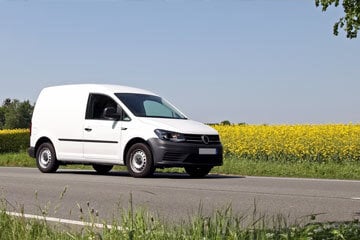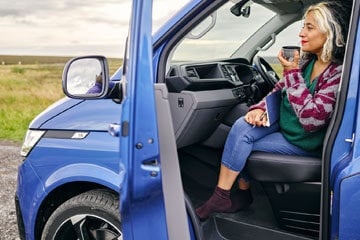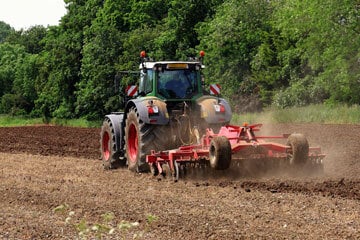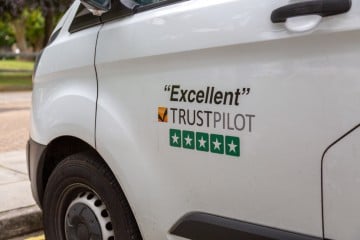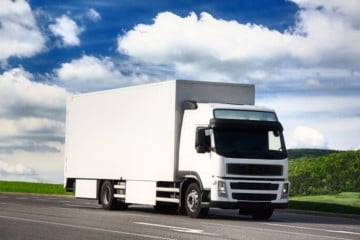A campervan lets you have the fun of camping and being outdoors, without the not-so-fun bits of staying in a water-logged tent. It also means you don’t have to put up with airbeds that deflate overnight or the hassle of packing up a wet tent.
But already converted campervans can cost a lot. To get a new VW California you’re be looking at around £60,000.
So what about getting a van and converting it yourself?

Is it legal to convert a van into a campervan?
Yes, as long as you avoid structural modifications to the van’s framework, engine or cab. The conversion must also meet the requirements set out by the DVLA.
To be considered for reclassification, the DVLA expects certain work to have been done to your van both externally and internally. The DVLA also specifies the body types of vans it considers suitable for conversion.
The DVLA’s requirements for external work include:
- More than 1 window on at least 1 side of the main body of the van, in addition to the windows in the side doors
- A separate door to provide access to the living accommodation
- Motor caravan-style graphics on both sides of the vehicle
- An awning bar attached to either side of the vehicle
- A high-top roof (this doesn't include a pop-top elevating roof)
The DVLA may require photographic evidence of these when you finish the conversion.
For internal work, the DVLA wants to see:
- Seats and a table
- Sleeping accommodation, which may be converted from the seats
- Cooking facilities
- Storage facilities
Each of these categories also has specific requirements that you must fulfill.
Once the campervan meets these requirements, you need to reclassify it as a 'motor caravan' – what the DVLA calls campervans – on your V5C log book.
What to consider when converting a campervan
Doing your own campervan conversion should save you money and let you get exactly what you want. You can decide what's a must-have and what would be a nice-to-have.
Some of the best campervans have everything you could need and look pretty amazing. But it’s important to work within your budget.
When planning the layout of the vehicle, some of the main must-haves to consider when converting a campervan include:
- Somewhere to sleep
- A kitchen
- A bathroom
- Somewhere to store water - both clean and wastewater
- Extra storage
- Insulation
- Ventilation
- Seats with 3-point seat belts
What will I need for a campervan conversion?
You need something to do your planning on - a pen and paper if you’re old school or a program like Adobe Illustrator if you’re not.
Once you’ve got your plans finalised in 2D, it can be useful to check them in 3D in a program like SketchUp. This lets you make sure that everything fits properly and works the way you need it to.
Alternatively, if you’re converting a popular van, there are plans online to give you ideas to work from.
Then you can get to the bit you’ve probably been looking forward to most – the tools.
Things that should be useful include:
- A sliding mitre saw to cut batons of wood accurately
- Quick grip clamps to give you another pair of hands
- A jigsaw to cut through steel panels, wood and plastics
- A hole saw
- A screwdriver bit set
- A good drill and spare drill bits
- A good straight edge
- A tape measure
Once the conversion is complete, you may also want to consider the daily essentials. These could include:
- A toilet and shower
- A portable fridge
- A suitable cooker
- Beds
- Solar panels or batteries
Check prices for portable fridge on Amazon
If you're looking to rack up serious mileage in your vehicle, converting your van to run on LPG could be a good way to save on fuel.
Should I buy a new or a used van for a camper conversion?
Price is a big factor when deciding between a brand-new or a used van. On the whole, used vans are usually cheaper. But you need to calculate how much money you might have to spend on an older van to make it usable.
If you're able to, it’s worth considering paying on a credit card. This means you should have more protection under Section 75 of the Consumer Credit Act 1974, but this isn’t always possible.
If you’re buying a used van from a dealer, you also have more protection. Under the Consumer Rights Act, all goods should be of satisfactory quality, fit for purpose and as described. You usually have up to 6 months for a repair, replacement or refund if this isn’t the case.
Buying from a private owner means it’s a lot harder if things go wrong. It's the buyer's responsibility to carry out checks before buying a van to make sure everything is as it should be.
Best large vans to convert to campers
Vans that regularly crop up as being the best large vans to convert to campervans are:
- Volkswagen Crafter
- Mercedes-Benz Sprinter
- Ford Transit
- Renault Master
- Citroen Relay/Peugeot Boxer
Best medium vans to convert to campers
Size is important when searching for the best van for a camper conversion. If a medium van is more what you’re looking for, here are some popular models for converting:
- Volkswagen Transporter
- Vauxhall Vivaro
- Toyota Proace
- Nissan Nv300
- Renault Trafic
How much does it cost to convert a van into a camper?
If you’re good at DIY and happy to rough it a bit, you could convert your van for less than £1,000.
At the other end of the scale, you could pay a specialist van conversion company £40,000 to do a high-end job.
Most van conversions fall somewhere in between. You should be able to get a high level of finish for under £10,000 if you did most of the work yourself.
Unless you already have the skills, some jobs are better done by experts. So you should look to hire a tradesperson for the electrics and the gas. Aim to allow around £2,000 to £4,000 for these to be done professionally.
Do I need a special licence to drive a converted campervan?
The type of licence you need to drive a converted campervan depends on your age and the vehicle’s maximum authorised mass (MAM). The MAM consists of the vehicle's weight and the maximum load it can carry.
According to the GOV.UK website, you need a category C1 licence to drive a motorhome with a MAM of between 3.5 and 7.5 tonnes.
If the motorhome has a MAM of over 7.5 tonnes, you need a category C licence instead.
If you passed your driving test before 1997, you should be authorised to drive vehicles up to 7.5 tonnes.
If you passed your test after 1997, you should have a standard B licence that only authorises you to drive vehicles up to 3.5 tonnes. To drive a campervan over this weight, you may need to take a new test and obtain the C1 category on your licence.
Will the DVLA reclassify my van as a campervan?
Getting your van reclassified as a ‘motor caravan’ – what the DVLA calls campervans – used to be reasonably straightforward. It was worth doing as it meant you could get cheaper van insurance and better deals on things like ferry crossings.
It also meant that if you had a small van with an unladen weight of less than 3.05 tonnes you could go as fast as a car on all roads.
But in 2019 the DVLA’s requirements got much stricter and most applications are now rejected. The DVLA says you can use your van as a motor caravan if you think it is one.
To be considered for reclassification, the DVLA expects certain work to have been done to your van both externally and internally.
The DVLA also specifies the body types of vans it considers as suitable for conversion to a camper.
The DVLA’s requirements for external work include:
- 2 or more windows on at least one side of the main body of the van, in addition to the windows in the driver and passenger doors
- A separate door to provide access to the living accommodation
- Motor caravan-style graphics on both sides of the vehicle
- An awning bar attached to either side of the vehicle
A high-top roof (this doesn’t include a pop-top elevating roof)
And for internal work, the DVLA wants to see:
- Seats and a table
- Sleeping accommodation, which may be converted from the seats
- Cooking facilities
- Storage facilities
Each of these categories also has specific requirements that must be fulfilled.
What else do I need to remember with campervan conversions?
Don’t forget to make sure you sort out your tax and van insurance.
Getting valid van insurance for your pride and joy is a must. But campervans and motorhomes are classed differently for insurance purposes.
If you’ve converted a van for camping, take a look at campervan insurance. If you’ve bought a vehicle with a definite cab and a bit more space, that may need motorhome insurance.
And while you can get insurance just for your campervan, some multi-car policies include campervans so it’s worth comparing them as well.
Compare campervan insurance quotes
Campervan security is also a major factor to consider. A combination of old-school devices and modern technology is probably best.
So look at things like steering wheel locks, pedal locks and wheel clamps combined with some sort of tracker.
Improving your van’s security in this way should make it harder to steal and give you a chance of knowing where it is if someone does take it.
Keeping it off the road, preferably in a locked garage, could also lower the risk of it being stolen. And the lower the risk of theft, the lower your insurance cost might be.
Confused.com is a participant in the Amazon EU Associates Program, an affiliate advertising program designed to provide a means for sites to earn commission incomes by advertising and linking to Amazon.co.uk.


